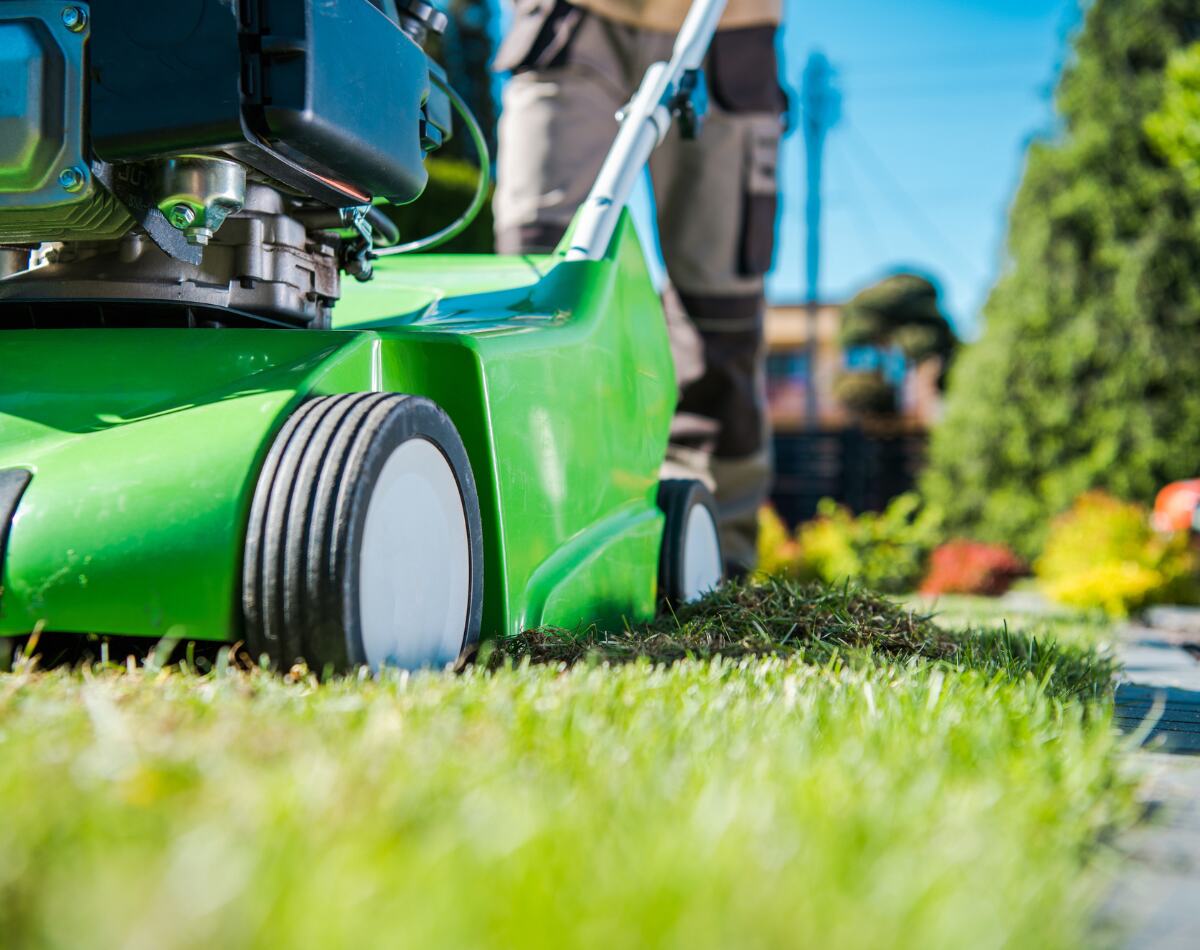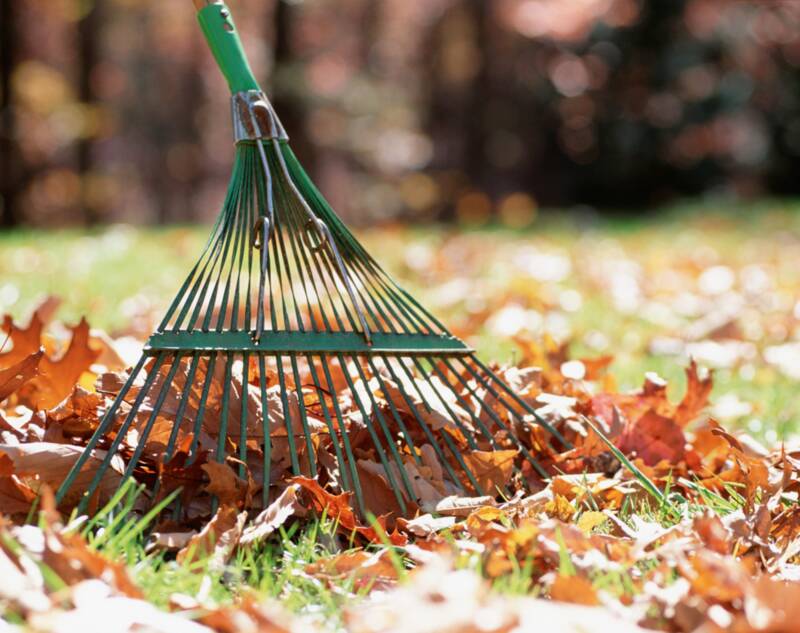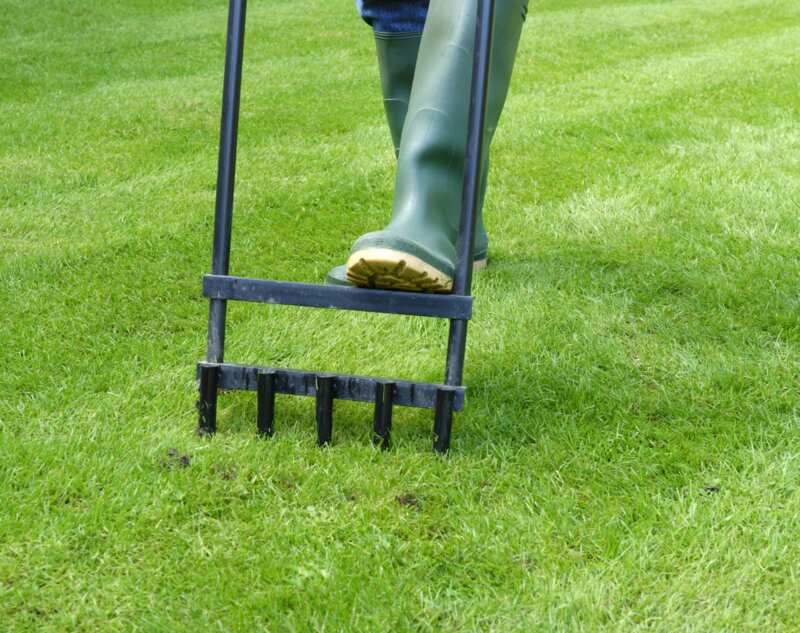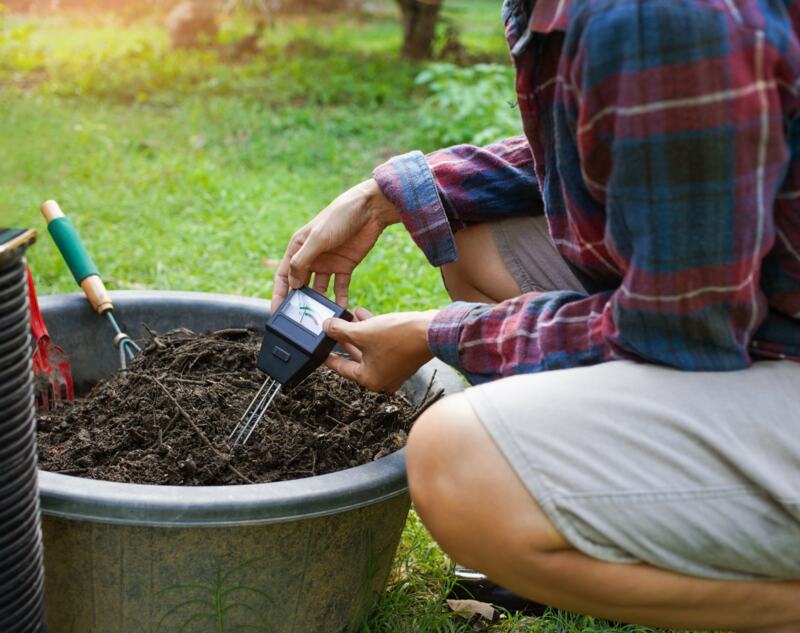
By Labor Day, summer heat cools down in Atlanta, Georgia. The tree canopy spots golden leaves, bands hone their cords for Music Midtown, and diligent neighbors debate how to do fall lawn care in their Atlanta yards.
Since the real chill comes late in the season, there is much work to do. Warm-season grasses go dormant from late October to mid-November. Tall fescue stays active all year round. They all need water, mowing, clean-up, pest protection, weed control, and more. That’s if you want a healthy, dense lawn in the spring. Read this article to ensure you have all the essential fall lawn care tasks for your Atlanta lawn covered.
Water as Usual Until Late Fall
Irrigate your Atlanta lawn with 1 inch of water weekly until mid to late October. That’s when warm-season grasses, like Bermuda, Zoysiagrass, and St. Augustinegrass, begin to enter dormancy.
During fall, the grass slows down its growth. Then, it stops growing altogether and seems to dry out, taking a brownish color. When this happens, reduce watering to only about 0.5 inches a week (or less if it rains). Note: the brownish color doesn’t mean your grass is dead! It’s just taking a rest from active growth for the winter.
You’ll stop watering altogether when temperatures go below 40°F. Since this happens mid to late December, we talk more about it in our winter lawn care guide for the Atlanta area.
Prepare for the Last Mow on Warm-Season Grasses
From September to late October, mow your lawn slightly shorter than you do during summer. Here’s how high to set your mower blades for the most common Atlanta turfgrass types.
| Grass Type | Recommended Fall Mowing Height |
| Hybrid Bermuda Grass | 1.5 inch |
| Zoysiagrass | 1 inch |
| St. Augustinegrass | 3.5 inches |
| Tall Fescue | 2 inches |
When Hotlanta finally turns cold, and soil temperatures drop below 55°F, warm-season grasses go dormant, which means you can stop mowing for the winter. This typically happens from late October to mid-November, and you need to mow for the last time a few days or weeks before.
What if you have cold-season tall fescue on your lawn? Fescues go dormant when soil temperature goes consistently below 45°F. This rarely happens in Atlanta during the fall. Fescue lawns are generally green all year round in the Peach State, and you’ll need your lawn mower throughout the fall and even for part of the winter months. But tall fescue does slow its growth significantly, and you’ll mow less and less often.
Pro tip: To ensure you stop mowing at the right time, check the ground temperature in Atlanta here.
Rake Fallen Leaves

From the beautiful white dogwood to the southern live oak, most trees and shrubs give up their foliage in autumn. Some do it on your lawn. Dead leaves on the grass form a thick thatch, limiting water and nutrient absorption, but leaf removal prevents that.
It’s also relatively easy to do. Use a rake to clean up the lawn and gather the leaves in small piles around the yard. They will be easier to collect later.
Besides the additional work, fallen leaves are quite a gardener’s boon. You can use them as natural mulch for:
- Trees
- Flower beds
- Vegetable gardens
Let them dry, then shred the leaves and use them to cover the soil.
Dead leaves are also useful as compost, and autumn is the best moment to collect them. Read more about it in our guide to homemade compost.
Apply a Pre-emergent Herbicide
Annual bluegrass, chickweed, and henbit are winter weeds common to Dogwood City. They live long and well after the warm-season grasses enter winter dormancy. And guess what? They will take over your lawn and deplete valuable nutrients.
To keep them under control, apply a pre-emergent herbicide. Spread it on a warm-season grass lawn in September when the temperatures go consistently below 70°F and continue to drop.
Pro tip: If you plan to overseed tall fescue, skip this part of fall weed control. Once applied, the herbicide stops any seed from germinating (including grass seeds) for 2 to 3 months.
Pest Control
Armyworms, Japanese Beetles, mole crickets, and spittlebugs are four common pests that can wreak havoc on lawns in the Metro Atlanta area if allowed.
Armyworms are given away by brown spots on your lawn and inexplicable flocks of birds raiding your yard for a juicy snack. They love Bermudagrass and fescue and make their move in late August or early September.
Japanese Beetles, also known as grubs, eat grass roots, so spots of dead grass are a good sign of their presence. Grubs hit Atlanta lawns from October through November.
Mole crickets dig tunnels through your garden to snack on grass roots and stems, and you’ll see thin mounds of soil on the surface. An infested lawn has brown patches and grass that detaches easily from the ground. The good news is that they don’t like Bermuda and fescue, but your Big-A yard is at risk if you have Zoysiagrass, Centipedegrass, or St. Augustine. Mole crickets get to work from September through October.
Spittlebugs, on the other hand, love all warm-season grasses common to the Peach State. They’re active from June to September and leave a white, foamy substance on stems and leaves.
How to deal with lawn pests in the fall?
- Keep an eye on your lawn. It’s essential to catch their presence as soon as possible.
- Find a trustworthy company offering lawn care services to apply the proper pesticides.
- Fertilize moderately from October through November to allow roots to recuperate over winter and survive the attack.
Aerate your Fescue Lawn

The best time to aerate a lawn in Atlanta depends on the type of grass you have in your yard.
Warm-season grasses benefit from aeration done in spring and mid-summer. But, if you have a shaded lawn with tall fescue, your golden period is the fall season, from early to late October.
Although tall fescue tolerates foot-traffic well, outdoor family activities can lead to soil compaction. Compacted soil has a poor absorption rate and deprives the grassroots of essential nutrients, water, and oxygen.
Core aeration extracts small cylinder-shaped cores of soil from the ground. It leaves behind tiny holes that improve drainage and lead air, water, and nutrients to the root zone faster. Invest in a good quality core aerator to loosen the soil DIY in the fall, or consider a seasonal lawn maintenance plan with a lawn care company in the Metro Atlanta area.
Overseed Tall Fescue
Tall fescue is thinned and tired after the hot summer. Come fall, most fescue lawns in Atlanta have a few brown spots to prove it. Take advantage of the perfect September and October weather to add new, fresh sprinklings of grass seed.
Overseed with fescue to make the lawn thick again and remove dead spots. To prepare for overseeding:
- Mow and bag the clippings.
- Aerate to help seeds build healthy roots easier.
- Spread starter fertilizer.
Pro tip: October is also the ideal time to start a new lawn with tall fescue in Atlanta’s climate.
Fall Planting
With temperatures regularly below 80°F in September but above 45°F until mid-November, the fall season welcomes new planting in Atlanta. This is the perfect time to put your landscaping ideas into motion:
- Plant a tree or two for shadow.
- Add some shrubs for structure and a little privacy.
- Put in some beautiful flower beds to add spring color next year.
Pro tip: October in Atlanta is the best time to plant bulbs of tulips and daffodils. November is ideal for planting trees.
Test Soil pH

Test the soil and ensure it has a pH of 5.5 to 6.5 to allow nutrient absorption. The red Georgia clay soil tends to become acidic in time if not treated. You need to test pH early to mid-fall because the treatment (granular lime) needs up to six months to take full effect. Applied in October or November, lime will prepare your lawn soil in time for May fertilization.
Fertilize Tall Fescue
Tall fescues are the only grass still growing actively during fall in lawns around the Big-A. To help its development, apply fertilizer in early September and, optionally, in November.
FAQ
If you have a tall fescue lawn, you can add the last fertilizer of the year in late October or early November. Avoid fertilizing warm-season grasses during fall.
During the fall season, fertilize with a standard formula or a starter fertilizer that contains phosphorus to support root development.
Autumn is an excellent time to overseed your lawn if you have cold-season grasses like tall fescue.
Enjoy a Green, Lush Atlanta Lawn in the Fall
The fall season comes with many chores for the diligent lawn owner. You need to aerate and mow a certain way, keep track of soil temperature, rake leaves, and kill pests. If you’re feeling overwhelmed and want more time with your family, leave this to a pro. Find a lawn care company in Atlanta and enjoy the comfort of a green, lush lawn in the fall – without all the extra work!
Main Image Credit: welcomia / Canva Pro / License